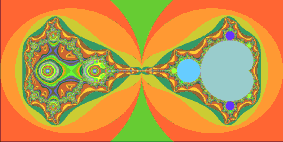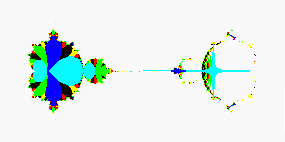Preparing the Pitch Lap
I had great difficulty in forming the pitch lap.
The 1st two goes failed because I was cutting the channels when the tool and pitch were cool, hence the pitch squares broke free of the tool when cutting out the channels. Basic conclusion:- the pitch and tool should be about 20-30 degrees C when cutting the channels, which worked for me eventually.
For my third attempt I used a template to cast squares of pitch onto the tool. This failed because the squares of pitch came away with removing the template.
After talking to Ron , I had another go:
- Case pitch onto tool by lining the tool edge with aluminium foil 6 mm above the edge, and poured the melted pitch onto the tool from the edge towards the centre with slightly more on the centre.
- After cooling heated the tool and pitch in hot water (60 degrees C) and formed pitch surface to the mirror with detergent between the mirror and the pitch to stop the two sticking to each other.
- Then gradually cut the channels with the tool heated in water to about 30 degrees C with lots of detergent, cutting all the channels before removing them.
- Then hot pressed the pitch with the mirror with a mixture of detergent, water, and Cerium Oxide with a weight of about 5kg with the tool heated to about 40 degrees. This reduced the pitch thickness from 6mm to 3mm and all the channels virtually filled with spreading pitch. Note that various ATMer's reckon that the thinner the pitch the harder it reacts during polishing and visa versa.
- Re-cutting the channels, with the tool cold cause some squares of pitch to break free of the tool. Basic conclusion is that hot pressing should be done with tool/pitch at about 30 degrees or less.
After this failure I repeated the above and hot pressed with the tool/mirror at 30 degrees with a mixture of Cerium Oxide, water, and detergent between them, which worked at last.Return to top of page
Polishing to Remove Pits
A number of the squares of pitch were not in total contact with the mirror after cold pressing for 5 hours with a weight of about 5 pounds (using a 6" dia. plant sprayer filled with water to 5 pints with a paper kitchen towel over the tool and mirror to prevent any contamination. Also used these towel for drying and covering tool/mirror). Since this stage is removing pits I reckoned full contact was not necessary
During a given polishing period changed direction around stand every 5 or 10 minutes. Before each polishing period the mirror and tool were cold pressed for 10 minutes with a weight of 5 pounds as above. Used a mixture of 1 part of Cerium Oxide to 2 parts water and 1 washing up liquid.
Charged the pitch surface with the Cerium Oxide mixture at the start of each polishing period and roughly every 10 minutes during. Note that there was a distinct grinding sound initially that reduced as polishing progressed until the next charge of the Cerium Oxide mixture.
| Stroke |
Polishing time (Min.) |
Comments |
| 1/3 W Cord |
30 |
Whole surface now reflective. Numerous minute pits all across the surface. Using a x10 eye piece. |
| 1/3 W Cord |
30 |
Numerous minute pits all across the surface. |
| 1/3 W Cord |
20 |
Pits in central region becoming less numerous relative to the edge. Difficult to assess actual numbers because there are so many. |
| 1/3 W Cord |
20 |
Generally less pits but same relative distribution between centre and edge regions. Some channels in the pitch beginning to fill, Therefore clean out before next polishing. |
| 1/3 W Cord |
30 |
Added a layer of bees wax on top on the pitch squares and cleaned out the channels on the tool. After hot and cold pressing the wax surface scraped it with a knife in two directions at 90 degrees to create additional polishing edges. Generally less pits with the same relative distribution between centre and edge regions. Polishing mixture frothed up over the channels, is this a good way to distribute polishing particles? |
| 1/3 W Cord |
30 |
Generally less pits than above with the same relative distribution between centre and edge regions. Difficult to see pits with illumination from above. But found that pits were highlighted by shining a focused light at an oblique angle to the mirror so that there is little or no light beneath the mirror, small pits then appear as bright specks. |
| 1/3 W Cord |
20 |
Generally less pits than above with the same relative distribution between centre and edge regions. |
| 1/3 W Cord |
10 |
Two squares of pitch came detached from the mirror, therefore stopped. Cleaned the tool and re-attached squares by;
- drying the mirror and pitch squares
- cleaning the mirror areas and the mirror side of the pitch squares with turps
- replacing the pitch squares, while the turps was still wet, on to the mirror
- and immediately cold pressing the tool for 1/2 an hour.
- re-created micro facets by scraping the wax surface with a knife in tow directions at 90 degrees. Then cold pressed for a further 10 minutes.
|
| 1/3 W Cord |
20 |
Pitch squares remained in place, and micro facets disappeared . Very few pits left, more at the edges than at the centre as above. Now using a binocular microscope to examine surface with a magnification range of x10 to x100, with oblique lighting. |
| 1/3 W Cord |
20 |
After 5 minutes 3 pitch squares became detached, and a fourth after 10 minutes (different to those above). Removed them and continued, reckoning that their removal would not greatly affect the pit removal process. Replaced pitch squares using turps as above and re-created micro facets.
Couldn't see any small pits, those I thought were pits were just bits of dusts since they are removed using a cotton bud. Conclusions:
- Micro faceting appears to work well since I assume that the pits disappeared due to this, although need quantitative data to support this.
- It is possible that previously observed pits were just dust which would invalidate the above.
|
Return to top of page
Adjusting the Polished Mirror to a Spherical Surface
I had difficulty in getting my Foucault tester working such that I could see any defect. After testing the mirror on Ron Kelton's Foucault Tester it turns out the mirror is virtually spherical and ready to figure.
Re-built my tester which now works reasonably. I also generated a testing graph in Excel
Return to top of page



